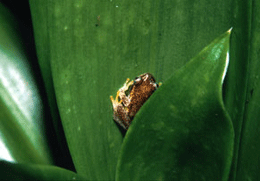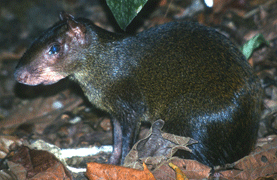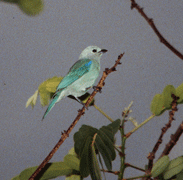Evolution provides an explanation for the extraordinary biological diversity on this planet, including vertebrates. In this program, we will focus on macro-evolutionary processes, specifically speciation and the evidence it leaves behind. In doing so, we will focus on several large philosophical questions, including: How, generally, do we make claims of knowledge in the study of history, including in a historical science such as evolution? Can we generalize from singular events, such as the evolution of flight in birds; if so, what is our justification for doing so?

We will use vertebrates as our model with which to study evolution. Innovations have marked the history of vertebrates and their immediate ancestors, including the origin of cartilage, bone, brains, endothermy, and the amniotic egg, which allowed for the invasion of terrestrial habitats. In addition, the transformation of existing structures to take on new functions has been a notable feature of vertebrate evolution: from swim bladder into lungs, hands into wings, and scales into both feathers and hair. Because we can not observe these transitions directly, evolutionary biologists are dependent on the study of extant species and fossils to determine how, when, and why these changes occurred.

Learning will take place in the classroom, anatomy (wet) lab, computer lab, and, to a much lesser degree, the field. Classroom work will include interactive lectures in which active participation by all students will improve the learning community for all. Weekly small-group discussion of study questions that students have worked on in advance will help synthesize the material. Also, student pairs will deliver 20-30 minute lectures on an anatomical system that they sign up for in the first week of class.
In the wet lab, we will study the comparative anatomy of vertebrate skulls and skeletons, and dissect cats and sharks. Systems investigated through dissection will include visceral, muscle, circulatory, and neuro anatomy. In three weeks of computer lab, we will become familiar with one of the software programs used for systematic character analysis (MacClade), and students will generate datasets from skull analyses that they will then analyze and present in the form of evolutionary trees. Students will also research and write a 6-8 page paper, using at least 15 primary sources, on some aspect of vertebrate evolution. For more information on assessment and student work in this program, see FAQs.
This program will provide background in macroevolution, vertebrate zoology, and epistemology (how we make and support claims of truth). We will investigate questions that may seem simple at first--What is a species?--but turn out to have myriad, conflicting answers. It is this complexity, and our attempts as scientists to discern the pattern in that complexity, that will be our focus.

